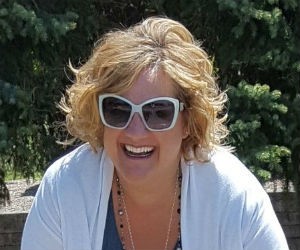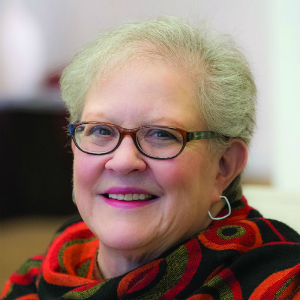In this month's Friday With Joan blog, we highlight the data from CoreClarity of those who submitted their input. Our goal had been to begin to compile a profile of what elements are shared by those who are in the meetings and exhibition industry. By no means scientific, it gives CoreClarity and our industry more with which to work as we consider the answer to “Why do you want to be a meeting professional?”
Two of those who took advantage of the additional coaching from CoreClarity turned out to be two people I’ve mentored. They agreed to be interviewed to provide more insight into their own Strengths and how they use them. To you, Kellee O’Reilly and Sean Schuette, CMP, I am grateful for your responses and your industry professionalism.
My gratitude to CoreClarity overflows for the gift of their work with those who took advantage of it, and the gift to our industry and to each of those of you who read this.
Question 1: To help others know more about you, a bit of background please:
Kellee: Kellee O’Reilly (formerly Kellee Magee, for anyone who goes back that far!*) I’ve worked around the Meetings/Events industry, for a variety of national associations since 1993, and opened my own firm, MonkeyBar Management, in 2006. Our work focuses on “change management”—helping our clients (state and national nonprofit/trade associations and small/medium family businesses in a variety of industries) build momentum and bridge the gaps to get from where they are to where they want to be. Some of that work includes strategic event design/production, consulting in times of team or event transition, and leadership/board facilitation focusing on building clarity and strategic plans.
CONTACT:
Twitter: @kelleeoreilly
LinkedIn: https://www.linkedin.com/in/kelleeoreilly
Email: kellee@monkeybarmanagement.com
Web: www.monkeybarmanagement.com
MY TOP 5 STRENGTHS:
- Strategic
- Futuristic
- Activator
- Maximizer
- Self-Assurance
* Joan: And I do! I was consulting to an association when Kellee was hired as their meeting planner. We formed an instant bond – over, I think, some contract tsuris (http://www.momentmag.com/jewish-word-tsuris/) for a contract we had to execute that wasn’t quite right! Kellee, still fairly new in the industry, asked me, with lots of years and lots of experience [they don’t always go together] if I had a CMP. I explained that I did not; that though I supported the process, I did not feel a) it was needed for the work I was doing which had become more consulting and strategizing versus hands-on and tactical; b) I’d write pages of challenges v. getting through the test because of years of different experiences; and c) I didn’t feel a need for ‘letters after my name.’
Kellee got ribbons for us: mine was “FFL” for “Full Fledged Legend” and hers? “LIT”—“Legend in Training.” Interestingly, her path quickly took her in a direction much like mine versus staying on the more tactical side of meetings.
Sean: My name is Sean R. Schuette, CMP, and I have been in the meetings industry going on 17 years now.** I am currently with an association management company (IntrinXec Management, Inc.) as their Director of Meetings and Events. I work with both local and national clients on their programs and events ranging in all shapes and sizes. Many are trade associations so I also interact in the arenas of membership, board partnerships, as well as partnerships with the various committees.
MY TOP 5 STRENGTHS:
- Belief
- Connectedness
- Developer
- Empathy
- Responsibility
My linkedin profile is: https://www.linkedin.com/in/seanrschuettecmp
** Joan: Smiling as I read about Sean’s 17 years of growth! Sean, working as a meeting planner without a title to match, searched the web for resources and found the old MIMList, the industry’s first listserv, founded by Rod Marymor of Cardinal Communications as an offshoot of their first industry portal, MIM—the Meetings Industry Mall. Rod gave me a choice: bulletin board (ugh even then!) or interactive listserv—to moderate.
I was ecstatic to have a vehicle—much like Meetings Today has given me with the blog and “Friday with Joan”—to continue to learn and grow and to help our industry learn and grow and to facilitate connections (Little did I know then, 1999, that my number one Talent or Strength was “Connectedness”!). Sean joined and sought help in moving fully into planning. I tried to always welcome, on and off List, new people.
There was something about Sean (maybe his “Minnesota Nice”? Probably more his initiative!) that lead me to believe he had great potential. I offered to and did pay for half his membership in MPI so that he could join and advance his career. He took it from there.
Question 2: When and why did you first take the StrengthsFinder assessment?
Kellee: I was intrigued by the idea of Strengths-based management after hearing Marcus Buckingham at an ASAE event (which must have been eons ago, when he was still with Gallup!). We began utilizing the Clifton StrengthsFinder 2.0 with our clients about 6 years ago, and I was intrigued when Joan suggested that perhaps there would be some “commonalities” among the results for meeting professionals, so I was eager to learn more from the CoreClarity team.
Sean: I took the test the first time around 2005 and then again in 2007 when I entered my current position. I took it again when the invite from CoreClarity was presented. I originally took it as I was starting to see it used amongst my peers and I am a proponent of the view of focus on your strengths first and not your weaknesses. The strengths really drive who you are.
Question 3: When you first learned your Strengths/Talents, what was your reaction?
Kellee: That my strengths seem to fit well with my constantly-juggling roles of thinking (strategic) and doing (activator/maximizer), as well as taking risks to try new things (futuristic / self-assurance).
Sean: When I first took the test around 2005 I was a bit surprised by the results for when I read about each of them, they really did fit who I am at the core.
Question 4: In what ways did you adjust how and what you did for work or other activities based on what you learned?
Kellee: I am constantly trying to be mindful of staying “in my strengths” and delegating other areas where I am not as strong to others. I also find it SUPREMELY helpful to use this tool with clients—so we all have a baseline understanding up front of our natural areas of strength and weakness, so we can try to optimize any situation by applying the right person.
Sean: I really honed in on the initial results around 2005 with the Responsibility and Positivity strengths for they resonated with me in so many areas of my life and when I shared them amongst peers they agreed 100%
Joan’s note: Like Kellee, I’ve used this with clients and to my delight, learned that a client with whom I began working a month ago used StrengthsFinders extensively. It helped me understand more about who the individuals with whom I worked were and to better understand how they operated.
Question 5: Now that you’ve been exposed to CoreClarity’s tools, and had a guided discussion, what else have you learned about yourself and what will you do with what you learned?
Kellee: CoreClarity’s tools took the StrengthsFinder basics to “the next level” of the recipe that comes out when the strengths are taken as a group—some of the key messages from the coaching call were very illuminating:
- Beware of “potential collisions” with other strengths (Strategic/Analytical, Activator/Deliberator, Futuristic/Context) and “intensifying” strengths (e.g., Focus, Maximizer, Futuristic).
- Spending time outside your strengths drains a person—“play where you shine!”
- My “Core Drill” (a CoreClarity term referring to my specific combination of Strengths) is defined as “Force of Nature”—there are times when I will be best served to take a step back and rely on a team member with softer edges.
- The “caution” statements offered about each of my strengths was particularly useful to reflect on (the “blind spot” that may occur as a negative element to my strengths).
Sean: I had never had a guided discussion about the results so that call with CoreClarity was extremely valuable. It was even more so as they parlayed the results into the work we do in the meetings industry. I was most struck with how knowing that Belief and Connectedness together forge powerful values and sometimes can cause resistance. It allowed me to connect the reality that sometimes it is a double-edged sword one needs to manage and grow from.
Question 6: What have I not asked you about your Strengths and their impact that you want me and our readers to know?
Kellee: One of the most powerful questions we use with clients is “What strength do you THINK would be your No. 6 and your No. 34?” (The CoreClarity exercises gets to this as well). Asking people to self-assess what they are surprised wasn’t in their top 5 (the “No. 6”) and what they KNEW wouldn’t be (their “No. 34”) isn’t scientifically valid, but it’s a great way to learn more about how a person views themselves.
(For the record, my No. 6 is Arranger … I always thought my No. 34 would be Context, but it turns out that it’s Harmony. I guess I don’t have any problems stirring the pot!) Joan’s note: Like Legend, like Trainee!
Sean: Another key nugget I gleaned from the guided discussion with CoreClarity that Responsibility can have the after effect of feeling guilty when things don’t resolve and in that I need to learn to not be afraid to say no to help balance it all.




